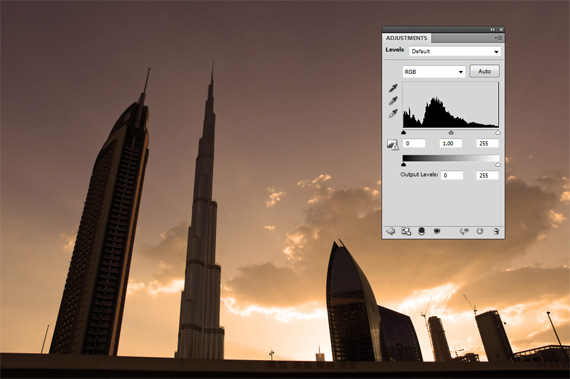The trick with taking pictures is getting the exposure correct. The exposure is a product of the ISO, shutter speed, and aperture. How can you tell if your exposure is correct? You might say, “Look at the back of the camera, and just look at the image. It looks fantastic!”
I hate to tell you this, but the LCD screen on the back of the camera can be a liar! If you just look at this to check you exposure you are not going to get the results you want. Don’t fret. There is a trick to getting perfect exposures.
It’s the histogram.

Understanding Your Histogram
The Histo-What?
The histogram. It is a graph that tells you where your information in the file is on the scale of light to dark. Hit the info button a few times when you’re playing back your image and it will come up on your display.
This graph looks like a mountain. The slope of the mountain can let you know tons about the image.
Every image you shoot is translated into a file. The file has information. This information is either in the highlights, mid-tones, or the shadows of the image. The histogram will let you know where the information is in the file. The left side of the histogram is dark, the right side is light, and the middle is the mid-tones.
How Do I Read a Histogram?
In an average scene with some dark areas, some light areas, and an easy transition between the two with most of the info in the middle you will get a perfectly even mountain. This will slope up from the left to its highest point in the middle and then back down to “sea level” to the right.
If you have a lot of white and bright areas (sand or snow) in your shot, you will get a mountain that is taller on the right side. The slope will be gradual on the left side and then ramp up significantly to the summit in the right one-third or quarter of the graph, and then slope sharply down to “sea level” before you reach the end of the histogram.
Now for a particularly dark image (nighttime) you will have the same kind of graph, only it will be reversed around the middle. So you will have a sharp rise from the far left line to the left one-third or quarter of the graph. The slope will then return to sea level as it moves to the right.
You want the slope to go to sea level on each of the far ends of the graph no matter what kind of image you’re shooting. If your graph ends and you have not gotten to sea level, it’s not so good. This will look like you drew a mountain and then took scissors to the paper and cut off part of it. You have clipped information that could be in the file but isn’t. When you clip you never get that information back because you didn’t capture it.
The trick is to get a histogram that matches the scene you’re shooting, so a nighttime shot, heavier on the left; an average shot: a beautiful mountain, and a beach scene, or snowy day, heavier on the right.
If you clip information, change your exposure to get a good histogram.
About the Author:
Christian Grattan is a corporate event photographer with over 15 years of experience in New York. With credits including Vogue, WWD, New York and InStyle magazines, as well as Jean-Paul Gaultier and Vera Wang, Christian knows his way around a camera.
“Check your histogram early and often. Only you can prevent detail loss in the shadows and the highlights.”
Go to full article: Using Histograms in Photography
What are your thoughts on this article? Join the discussion on Facebook
Article from: PictureCorrect
The post Using Histograms in Photography appeared first on PictureCorrect.